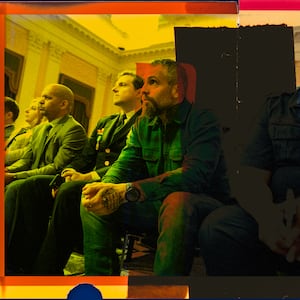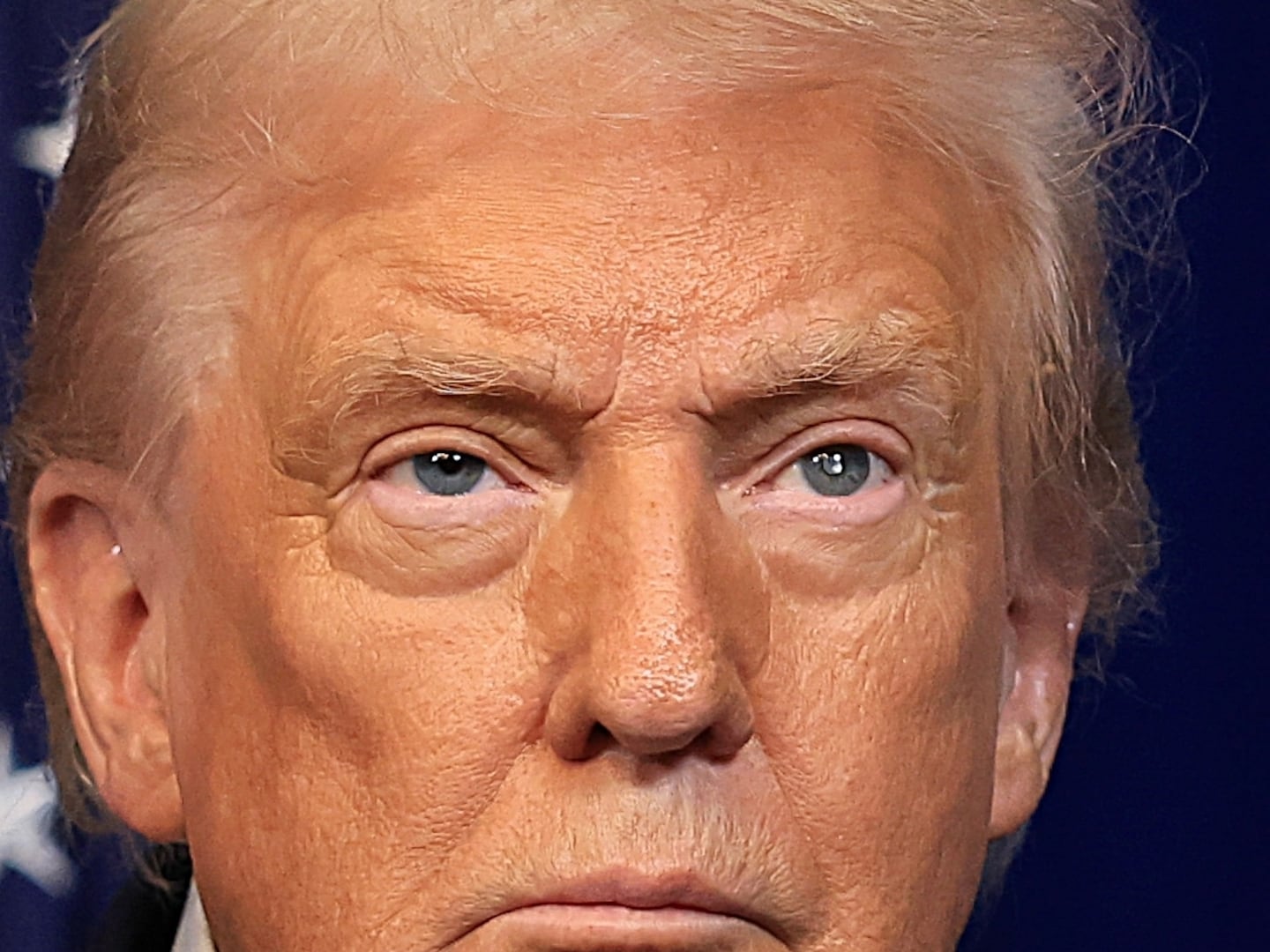The bipartisan House committee investigating the Jan. 6 Capitol riot released its final 845-page report on Thursday after a sweeping investigation that spanned 18 months, and included more than 1,000 interviews, 11 public hearings, and six criminal referrals.
Read the committee’s full report here.
The report places the blame for the events of Jan. 6, 2021, squarely on “one man”: former President Donald Trump. Calling him the “central cause” of the insurrection, the report states bluntly, “None of the events of January 6th would have happened without him.”
The report alleges that Trump acted illegally when he took part in a “multi-part conspiracy” to overturn the results of the 2020 presidential election, resulting in the attack on the Capitol.
“As the Select Committee concludes its work, their words must be a clarion call to all Americans: to vigilantly guard our Democracy and to give our vote only to those dutiful in their defense of our Constitution,” House Speaker Nancy Pelosi wrote in the report’s foreword.
In what committee vice chairwoman Rep. Liz Cheney (R-WY) called one of the most “shameful findings from our hearings” in her foreword to the report, Trump sat and watched the riot unfold on television in real time, ignoring the urgent pleas from “dozens” of his aides to issue a statement telling his supporters to disperse.
“In addition to being unlawful, as described in this report, this was an utter moral failure—and a clear dereliction of duty...” Cheney wrote. “No man who would behave that way at that moment in time can ever serve in any position of authority in our nation again. He is unfit for any office.”
In a furious response posted to Truth Social in the minutes after the report’s publication, Trump said, “The highly partisan Unselect Committee Report purposely fails to mention the failure of Pelosi to heed my recommendation for troops to be used in D.C., show the ‘Peacefully and Patrioticly’ words I used, or study the reason for the protest, Election Fraud.”
“WITCH HUNT!” he concluded.
The report’s eight chapters trace the narrative laid out by the committee at its summer hearings, beginning with Trump’s “Big Lie,” or the baseless claim that the 2020 election was stolen. It goes into detail on the then-president’s efforts to lean on state officials and lawmakers, including his own vice president, and the fake elector schemes he set in motion in states that went for President Joe Biden.
Trump and his campaign staff mobilized to contact more than 190 Republican lawmakers in Arizona, Georgia, and Michigan alone as he scrambled to dig up nonexistent votes, according to a campaign spreadsheet that was turned over to the committee. One campaign supervisor explaining the plan to his team over text wrote, “We’re gonna be lobbyists. Woot.”
The full-court press resulted in the leak of at least one voicemail, in which a Trump campaign staffer pressed a lawmaker on whether they’d support the creation of a slate of fake electors. In another message, the staffer characterized this effort as a bid to “save our country,” according to the report.
After the content of her messages were published online, the staffer received a text from her supervisor congratulating her, the committee wrote. “Honest to god I’m so proud of this,” the supervisor wrote. “... you used the awesome power of the presidency to scare a state rep into getting a statewide newspaper to deliver your talking points.”
The elector plan was characterized by ex-White House Deputy Counsel Pat Philbin as one of the many “bad theories” that popped up in the West Wing-like “Whac-a-Mole” in the weeks following the election. Former White House Counsel Pat Cipollone told the committee he agreed with this characterization.
The report also describes how Trump rhetorically mobilized far-right extremists and conspiracy theorists into a loose but well-organized coalition of protesters primed to attack the Capitol. At least one leader of “Stop the Steal,” right-wing provocateur Ali Alexander, was in contact with Trump fundraiser Caroline Wren and believed he had the blessing of the White House to lead rally attendees in a march, he told the committee.
Absent from the report was any analysis of how disinformation across social media contributed to the riot, with sources close to the matter telling The Washington Post that the subject was painstakingly researched, but ultimately cut from the report. (Notably, according to a footnote in the report, QAnon conspiracy theorist James Watkins denied under oath that either he or his son Ron were “Q,” the movement’s anonymous figurehead, contradicting an inadvertent suggestion to the contrary that Ron made last year.)
The report further highlights how law enforcement and the intelligence community were taken by surprise on Jan. 6, despite a number of red flags raised in the weeks prior to the riot. In one instance, four days before the attack, the FBI logged a social media post in its threat database that read, “This is not a rally and it’s no longer a protest. This is a final stand… many are ready to die to take back #USA... And don’t be surprised if we take the #capital building.”
On Jan. 5, the FBI’s field office in Norfolk, Virginia, alerted law enforcement on the potential violence set to explode the next day, noting that at least one online poster called for others to “[b]e ready to fight. Congress needs to hear glass breaking, doors being kicked in, and blood . . . being spilled. Get violent... stop calling this a march, or rally, or a protest. Go there ready for war. We get our President or we die. NOTHING else will achieve this goal.”
In her interview with the committee, Jennifer Moore, the special agent in charge of the intelligence division at the FBI’s D.C. field office, said that there was nothing illegal about such discussion, which would have required “such specificity and such planning and such detail” for a case to be opened.
“People’s First Amendment rights, obviously, are protected,” Moore said. “We cannot... just troll the internet looking for things that’s out there.”
Still, authorities failed to recognize “the full scale and extent of the threat to the Capitol” until it was already too late to secure the site. Though some of what officials knew about the day “was fragmentary, it should have been sufficient to warrant far more vigorous preparations for the security of the joint session,” the committee wrote. “The failure to sufficiently share and act upon that intelligence jeopardized the lives of the police officers defending the Capitol and everyone in it.”
But Rep. Bennie Thompson (D-MS), the committee’s chairman, did not condemn the failures, saying in his foreword that “the shortfall of communications, intelligence and law enforcement around January 6th was much less about what they did or did not know. It was more about what they could not know.”
“The President of the United States inciting a mob to march on the Capitol and impede the work of Congress is not a scenario our intelligence and law enforcement communities envisioned for this country,” he continued. “Prior to January 6th, it was unimaginable. Whatever weaknesses existed in the policies, procedures, or institutions, they were not to blame for what happened on that day.”
The final chapter contains the committee’s 11 legislative recommendations as a result of the investigation, including barring Trump from ever holding elected office if he is found guilty of violating the section of the Constitution’s 14th Amendment that discusses insurrectionists. The panel also suggests strengthening legislation on civil subpoena power and protections for election workers.
“Beyond what we recommend, in my view and as I said during our hearings, the best way to prevent another January 6th is to ensure accountability for January 6th,” Thompson wrote. “Accountability at all levels.”
Just prior to releasing its 154-page executive summary on Monday, the committee announced what was expected to be the report’s biggest bombshell: a recommendation that the Department of Justice charge Donald Trump for inciting or assisting an insurrection, obstructing an official proceeding, and committing conspiracy to defraud the federal government. The panel also urged the DOJ to charge Trump lawyer John Eastman.
On Wednesday and Thursday, the committee released the testimony transcripts of more than 40 of its witnesses, many of whom asserted their Fifth Amendment privileges during part or all of their questioning.
Many of the investigation’s most jaw-dropping revelations came out during public hearings, including evidence that Trump knew the crowd at the Capitol was armed, his unprecedented push to install mid-level DOJ attorney Jeffrey Clark as acting attorney general to help keep him in power, and White House aide Cassidy Hutchinson’s stunning claim that Trump tried to strangle a Secret Service agent while demanding he be driven to the Capitol mid-riot.
In the past 18 months, Congress referred four more Trump loyalists to the DOJ for contempt of Congress charges after they ignored subpoenas from the committee: former White House strategist Steve Bannon, former economics advisor Peter Navarro, former social media guru Dan Scavino and former chief of staff Mark Meadows.
While the feds ended up charging Bannon, who was found guilty, and Navarro, whose prosecution is ongoing, Thursday’s report noted that the committee was unclear why the Justice Department had declined to prosecute Meadows for criminal contempt.
“Commentators have speculated that Meadows may be cooperating in the Justice Department’s January 6th investigation,” it stated, going on to suggest that the “same may be true” for Scavino.









